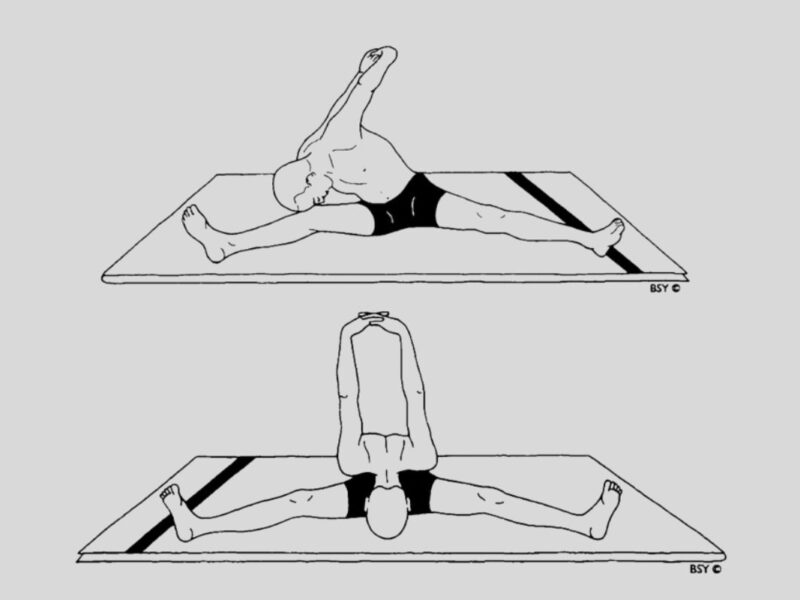Ardha Ushtrasana, also known as the half camel pose, is a yoga posture that provides numerous physical and spiritual benefits. This asana involves a series of steps and variations to achieve the desired stretch and balance. Here is a detailed guide on how to perform Ardha Ushtrasana, along with its variations and benefits:
Steps:
- Begin in Vajrasana position with knees apart and ankles beside the buttocks.
- Stand up on the knees with arms at the sides.
- Keep feet flat behind the body.
- Inhale, stretch your arms sideways, raising them to shoulder level.
- While exhaling, twist to the right, reaching back with the right hand to hold the left heel or ankle.
- Simultaneously, stretch the left arm in front of the head, aligning it with the eyebrow level.
- Tilt the head slightly back, gazing at the raised hand.
- Push the abdomen forward, maintaining vertical thighs.
- Hold the position, retaining the breath for a few seconds, and focus on the left hand.
- Inhale and return to the starting position.
- Repeat on the other side to complete one round, holding the right heel with the left hand.
- Practice 3 to 5 rounds without straining.
Awareness:
- Physical: Focus on the stretch in the back and neck, or on normal breathing if holding the position longer.
- Spiritual: Concentrate on the anahata or vishuddhi chakra.
Benefits of Ardha Ushtrasana:
- Provides a reduced level of benefits similar to Ushtrasana.
- Enhances flexibility and strength in the back and neck.
- Improves posture and balance.
- Stimulates the abdominal region, aiding digestion.
Variations of Ardha Ushtrasana:
Variation 1: Prolonged Hold
Hold the final position for 1 to 2 minutes while breathing normally, ensuring no strain.
Variation 2: Altered Breathing
Inhale into the final position, hold internal breath for a few seconds, then exhale while returning upright. Repeat on the other side. Emphasizes the abdominal region.
Variation 3: Beginner’s Pose
Place right hand on right heel and left hand on left heel. Easier with raised heels.
Variation 4: Raised Arm
After twisting, raise the outstretched arm above the head vertically. Maintain a backward head posture, eyes gazing at the raised hand.
Contraindications:
Neck or Back Injuries:
Individuals with neck or back injuries, particularly in the cervical or lumbar region, should avoid Ardha Ushtrasana. The twisting motion and backward bending can exacerbate these injuries, leading to further discomfort or damage.
High or Low Blood Pressure:
People suffering from high blood pressure (hypertension) or low blood pressure (hypotension) should avoid this asana, especially the variation that involves breath retention. The sudden changes in blood pressure can be harmful and may lead to dizziness or fainting.
Digestive Disorders:
Those with severe digestive disorders, such as hernia or ulcers, should avoid Ardha Ushtrasana. The intense stretching and pressure on the abdomen can worsen these conditions, causing pain or complications.
Vertigo or Balance Issues:
Individuals prone to vertigo or balance problems should steer clear of Ardha Ushtrasana, especially the variation that involves twisting and looking backward. Sudden movements and changes in gaze can trigger dizziness and loss of balance, increasing the risk of falls and injuries.
Pregnancy:
Pregnant women, particularly those in the second and third trimesters, should avoid Ardha Ushtrasana. The twisting motion and pressure on the abdomen can be harmful to the developing fetus. Pregnant individuals should opt for safer prenatal yoga poses under the guidance of a qualified instructor.
Learn to know more about yoga and meditation so you can visit the best yoga ashram in india and join 200 hour yoga teacher training in india and 300 hour yoga teacher training in india and kundalini yoga teacher training in india



